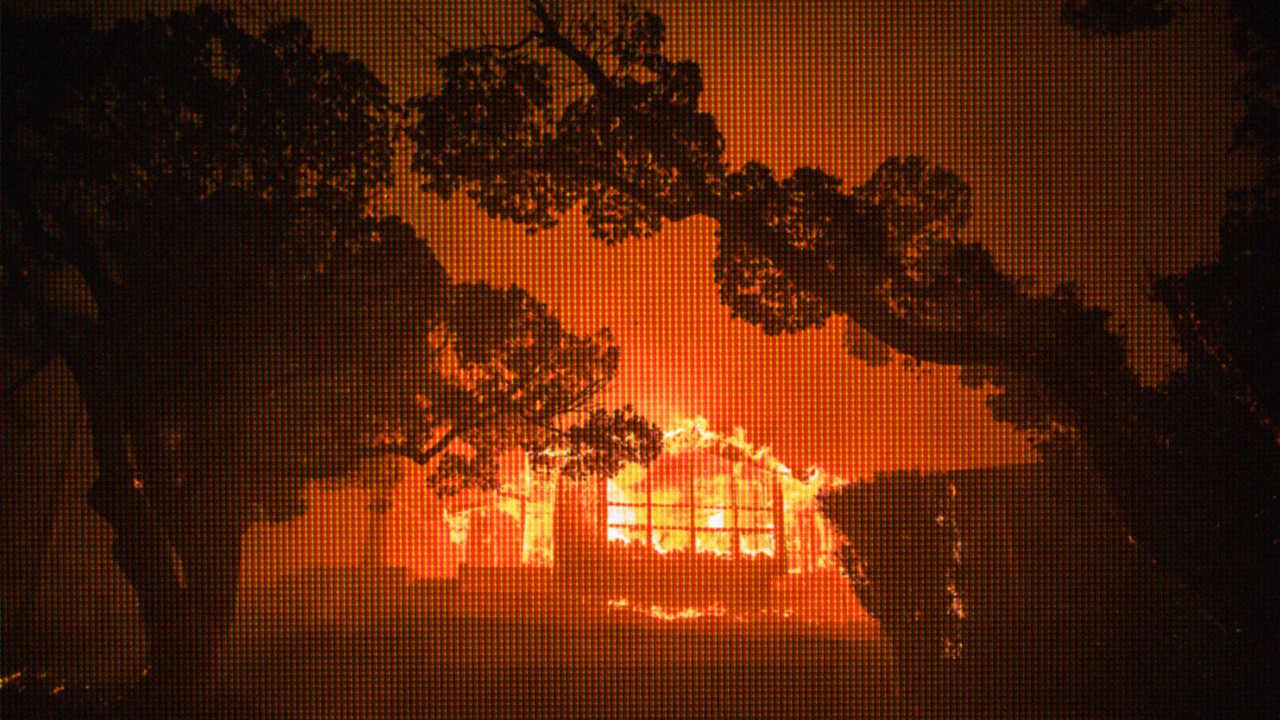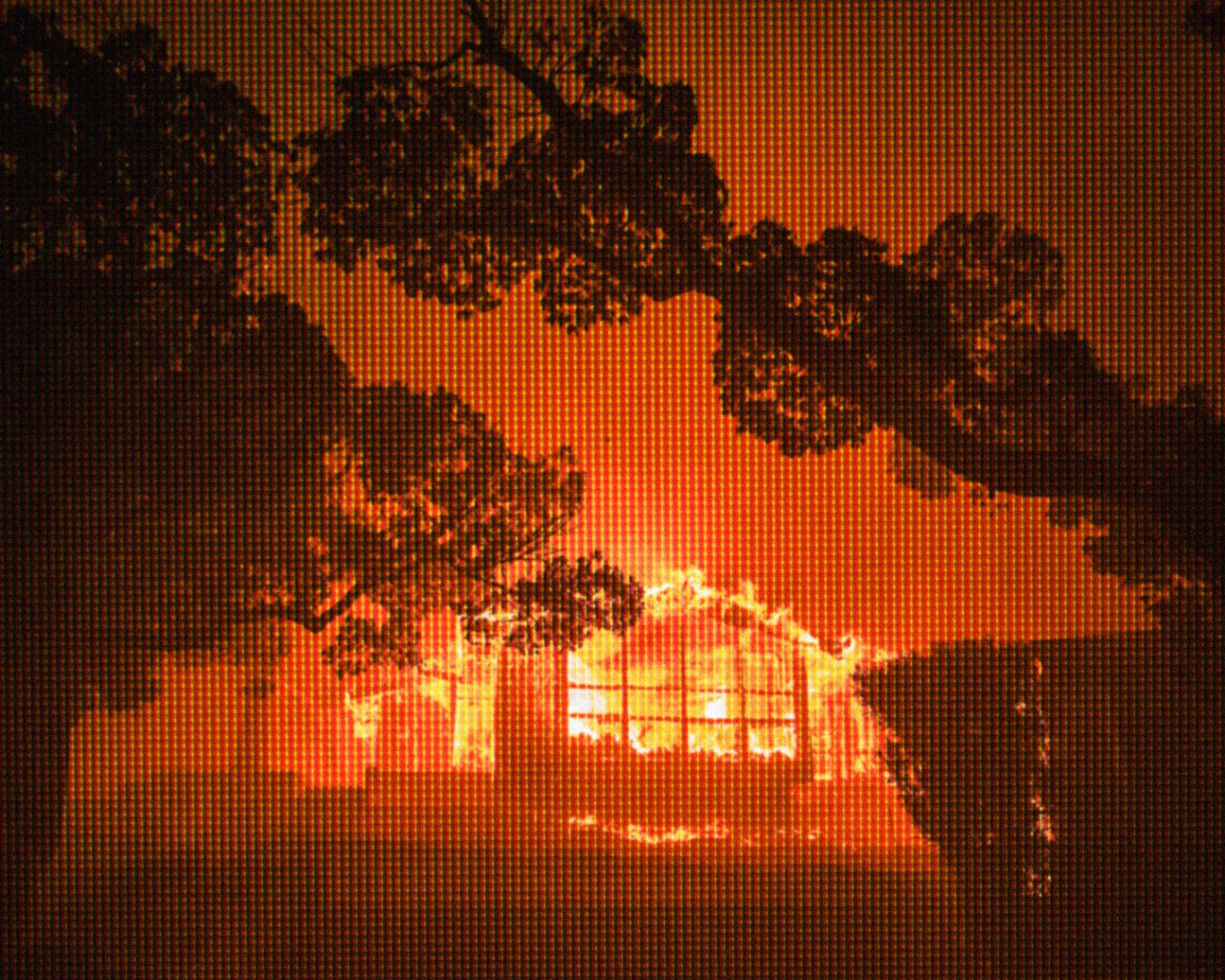

WORDS BY KATHARINE GAMMON
Artwork by Tessa Forrest
Gabe Gottlieb sat in a friend’s house in Mar Vista, California, staring at his phone in terror. He watched the three camera feeds mounted on his Pacific Palisades home: one from the top of the garage, one at the front door, and one in his backyard.
Gottlieb and his family evacuated their home last Tuesday as evacuation orders were being issued. Now safely 10 miles southeast, in the early hours of Wednesday morning, he watched the feed from his front-door camera as a brush fire ignited the bushes across the street. Then, the backyard camera picked up a bright glow: The fire had come.
“It was a horror movie moment,” said Gottlieb. “I saw a house go up two streets above us. I could literally see it burning on the Ring camera. I just sat there, watched it, and watched the fire slowly march over.”
He flipped hurriedly between feeds. Every so often, a Los Angeles Fire Department truck would pass by. Gottlieb watched anxiously as they looked at the brush fire and drove on.
It felt totally surreal, Gottlieb said. As he watched, he wondered what he could do. “The cameras actually have a speaker, so I was thinking maybe the next time they drive by I could hit the speaker button and yell, Can you hose down that, that hillside, please?”
Eventually, his wife told him to shut off the phone and go to sleep. They were safe, and a house was just a house. So, Gottlieb slept for a fitful few hours, unsure what the morning would bring.
Nest and other doorbells are capturing the destruction in LAhttps://t.co/EtGwcTjewF pic.twitter.com/JymKP2q71I
— Daniel P. Aldrich urbanists.social/web/@dpaldrich (@DanielPAldrich) January 12, 2025
Since the dawn of television, people have experienced disasters like fires, floods, and hurricanes through screens. But the rise of home cameras is now taking those disasters to the most intimate extreme: into people’s homes. As climate-fueled mega-disasters become more common, these cameras will play a larger role, for better or for worse, in our perception of the changing world. And Los Angeles, a city famous for its on-screen stories, is where people are first seeing how it all plays out.
Not everyone who had cameras could access them. In some parts of town, the power was turned off as a precaution. But in other places, connectivity was still working. “Lost our Malibu rental,” one of my neighbors told our group text. “Watched the cams connected to Starlink until the bitter end.”
Other residents used the cameras to actively participate in the first responder process. Lawrence Vein, who lives in the same Palisades neighborhood as Gottlieb, started monitoring his cameras at 5 a.m. on Wednesday. He noticed that blowing embers started a small fire in his backyard. By 6:30, he said, it started to get worse. “I called LAPD. They dispatched LAFD. If I have not had my cameras active it likely would’ve burned down the house.”
Tim Conrad and his wife, Jessica Stoller-Conrad, who evacuated their home near Eaton Canyon, had a camera in the backyard that monitored their pool for signs of distress: a water safety measure. The field of view didn’t include their home, but they felt pretty confident it was still standing as they watched ash fall like snow over the pool. Then, the feed went dark. Stroller-Conrad had three thoughts: “Either we lost power, we lost the internet, or the house burned down,” she said. “It could be any of those things.” Fortunately, it was the first.
On Saturday, I found myself in the same situation. My spouse and I evacuated 120 miles from home. We sat together watching our home’s front-door camera. I squinted. Was that ash raining down? Was the sky a strange color? The camera pinged—a dog barking. It made me wonder, if Ring could detect dog barks, could they do the same for climate disasters?
“I saw a house go up two streets above us. I could literally see it burning on the Ring camera. I just sat there, watched it, and watched the fire slowly march over.”
When Gottlieb woke up before dawn Wednesday morning, he waffled over checking his home camera app. He said it felt like opening a college admissions envelope. The information was right there; he just had to muster the courage to see what was inside.
To his relief, the house was still standing. He rewound the cameras and he saw that the fire truck that was circling the block had eventually returned to hose down the brush fire across the street.
An hour later, as he ate breakfast with his kids, flames reached his backyard. Fires flanked his home in the front and back, but somehow they spared the house. “I wasn’t crying, I was just glued to it,” he said. His sons started asking to check the cameras multiple times each day, just to see if the house was safe. It became their touchstone. But Gottlieb is trying to keep that impulse in check.
“I’m an information guy,” he said, adding that he was reassured to have a stream of images coming in, even if he could do little to help the situation. “I liked having the chance to just be watching it and knowing.”
Most of his neighbors didn’t have that level of information, and the cameras became a sort of informational mutual aid. Messages flew in the group chat asking if anybody could see their house. One neighbor even built a spreadsheet to keep track of all the information.
Still, Stoller-Conrad isn’t sure that the constant stream from her house was good for her psyche. People used to evacuate and have no clue what they return to. “There’s like power in that,” she said. ”But for me, I think not seeing would have almost been as good as seeing.”
View this post on Instagram
Home Cameras Offer ‘Horror Movie Moments’—and Essential Help—Amidst LA Fires